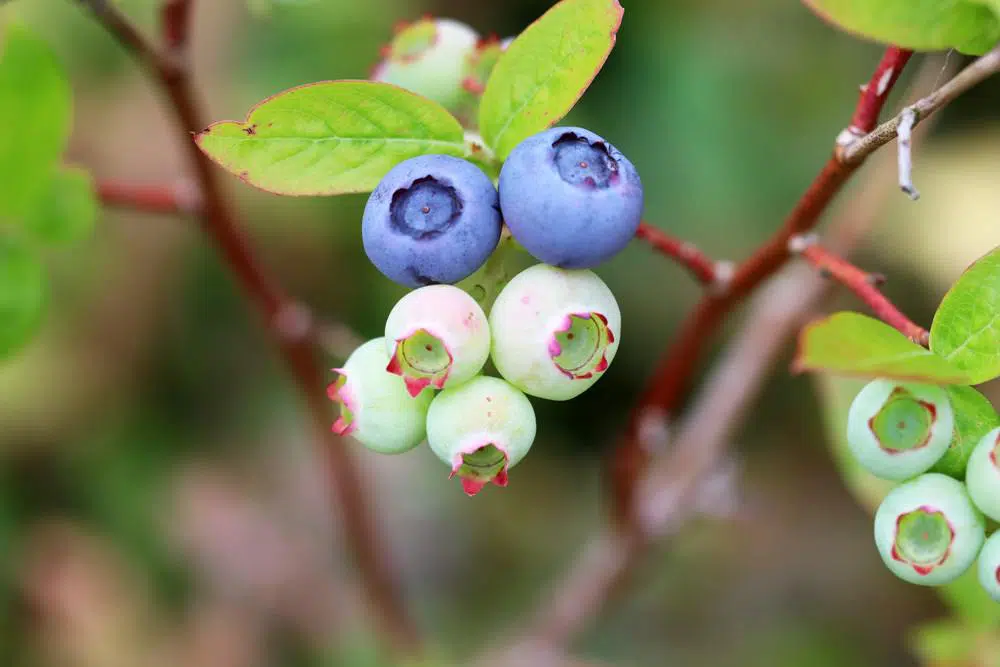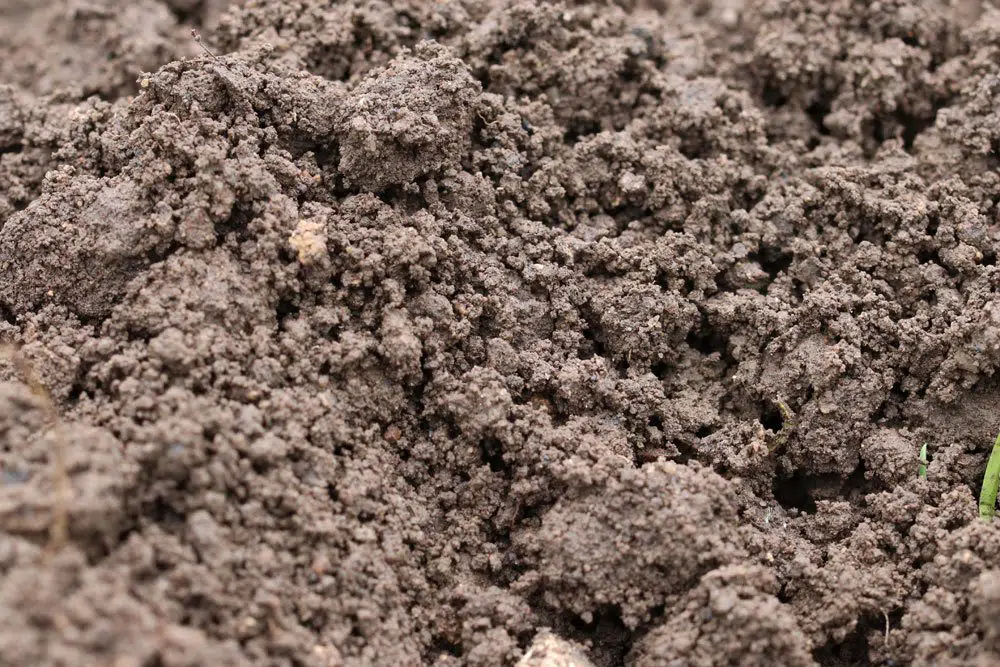Acidic soil is important for many plants to enable species-appropriate site conditions that improve growth and maintain the health of the crop. Many of the soils in Europe are normal or slightly acidic, but only a few soils are really acidic, most of which are located in unused nature reserves. Therefore, the gardener has to help out by himself and lower the pH value. Those who do without peat can benefit from other methods.
Contents
Why acidify soil?
Every plant needs a different form of soil in which it feels comfortable. This is mainly defined by the natural distribution of the species that calls the soil found there its own. Therefore, there are many flowers and fruit-bearing plants that prefer an acidic soil, which is difficult to find in Europe and Central Europe in general. Lime is one of the main culprits here, as lime raises the pH of the soil and thus provides ideal conditions for native fruit and vegetable varieties. Nevertheless, some plants in particular, including bog plants, depend on a pH below 5.5, including the following.
- Rhododendron
- Blueberry
- Heather
- Cranberry
- Cranberry
- Camellia
- Kiwi
- Japanese azalea
- Rosemary heather
- Broad-leaved bay rose

Especially when growing blueberries in your own garden, this form of soil is necessary. Acidic site is typically achieved by adding peat, but more and more gardeners abandon the use of this organic sediment, because it is ecologically questionable. For this reason, numerous alternatives and methods can be found to lower the pH of the soil while not having to rely on peat.
Note: Be sure to refrain from using vinegar as a remedy, as it will only have negative effects on the soil, despite its immediate effect. Because of the acetic acid, it will kill important microorganisms that are essential for healthy plant growth.
pH-value
Check pH-value yourself
Since soil in Europe is hardly acidic, it is still worthwhile to determine the pH of the site before using a peat alternative. This will give you an overview of how acidic, alkaline or ideal your soil is, and will allow you to determine the dosage of the acidification agent more precisely. The following methods are available for this purpose.
With special test strips, which are also used for ground and irrigation water samples, a fairly good analysis of the soil condition in terms of acidic and alkaline can be made. These are used as described below.
- prepare a soil sample, which is stretched with water
- dip the strip into it
- wait until the strip changes color
- the color indicates the pH value of the soil
- cost: 3 – 5 euros

pH soil tests
This variant is similar to the test strips, but more accurate and also takes a little longer. It also involves more utensils, all of which are already in the kit. The instructions are described below.
- take several soil samples from the site from different depths
- mix them well
- add some of the soil to the test tube or container
- add distilled water
- add the reactant, usually a tablet
- close the container and shake it well
- then a color is displayed
- this color shows if your soil is alkaline or acidic
- Costs: 6 – 20 Euro, Neudorff for example 6 Euro
- Vinegar and baking soda test
The vinegar and acid test is the variant with the most inaccurate results, but gives a pretty good overview of whether your soil is acidic or alkaline.
- for this you take a soil sample in sufficient quantity
- add acetic acid and baking soda to the soil sample
- if you hear a hissing sound from the baking soda, the sample is more acidic
- If you hear a hissing sound from the vinegar, the sample is more alkaline.
- Cost: 0.2 – 2 Euro
Note: The higher the value goes in the alkaline direction, the more of the treatment is needed to make the soil more acidic. This may take several weeks depending on the agent used.
Soil analysis
Scientific soil analysis
Of course, you can also go the route of a professional soil analysis, but this involves higher costs. To do this, you simply send a soil sample to a laboratory that specializes in this type of analysis. You will then receive an exact indication of the pH values present and can therefore use the appropriate agent for processing. Costs here range from 50 to 80 euros, depending on the laboratory.

Soil condition
Before using a peat alternative, it is advisable to check your own soil in the garden and thus get a more accurate picture of the necessary addition. Here we find two specific types of soil that need to be treated differently.
- loose soils, good drainage
- compacted soils, loamy
While a loose soil that has effective water absorption and release is best enriched with organic materials, dense clay soils are quite different. Here, organic material would make the soil more alkaline, thus accomplishing the exact opposite of what is desired. Mineral materials must be used for this purpose, so that the compacted soil is adapted, but not changed in its composition or even permanently reduced.
Alternatives to peat
Peat is not the only material you can use to lower soil pH. Nature provides a variety of materials that have acidic properties and effectively work the soil over a period of several days to weeks. They have the advantage of not destroying the sensitive peatlands from which peat soil is derived in the process. Even small amounts of this sediment contribute to the destruction of important habitats of flora and fauna, and therefore the following alternatives should be mentioned, which are equally suitable for this purpose, without being harmful to the environment.
- Grape marc
- Needle soil
- Special compost
- Oak leaf compost
- Mulch layer
- Coffee grounds mixture
- Ferrous sulfate
- Sulfur
Grape marc
Grape marc is the solid residue of pressed grapes in wine production. The vegetable residues of the wines are an excellent material for lowering the pH of the soil, as they contain pure grape acid and fermentation substances. Since the pomace is not artificially produced, it can easily release the acid to the site without destroying important microorganisms. However, grape pomace can be obtained exclusively through winemakers.
Needle soil
It becomes simpler here with needle soil. Needle soil is the soil in the immediate vicinity of coniferous trees. Coniferous trees have the property of acidifying soils and for this reason it is worthwhile to use the needle soil around the trunk. You can easily use the garden soil from the planting site to fill the excavated needle soil around the coniferous tree.
Special compost
This special compost is an effective mixture of several organic components that together have an extremely acidic effect. The compost is parts of conifers, including the bark, needles and wood flour, horn shavings, coffee powder and leaves of chestnuts, oaks and walnuts. These are used together and can then be distributed in the planting soil. In addition, this compost has an extremely good fertilizing effect.
Oak leaf compost
You can also simply choose a compost made from oak leaves. Pure oak leaves are extremely acidic and as they decompose, they begin to give off even more acid, which has a positive effect on the soil. Even small amounts of this pure compost have a strong and non-negative effect on the soil. In addition, oak leaves are readily available in Europe, especially if you have an oak tree in your yard yourself.
Mulch layer
This mulch layer consists of a mixture of shredded coniferous wood of different species and also oak leaves. The properties of the conifers are effective even over the wood and are enhanced over the oak leaves. Apply this mulch to the site or soil in a thickness of five centimeters and also fertilize with an organic nitrogen fertilizer. Horn shavings are particularly suitable for this purpose.
Special mixture based on coffee grounds
Here, coffee grounds are an important substance to improve the acidic properties. Together with the coffee grounds, shredded coniferous wood, the associated needles and shredded leaves of oak are used. Also in this variant must be used a nitrogen-based fertilizer to enhance the effect and at the same time provide the plants with the necessary nutrients.
Ferrous sulfate
Ferrous sulfate is an alternative to peat that can be used primarily for compacted clay soils. Ferrous sulfate is not an organic substance, but a salt of sulfuric acid. In the soil, the sulfate acts extremely quickly and develops an acidity that can lower the soil pH by a whole unit in as little as two weeks. The only drawback is possible rust stains on clothes and paths.
Sulfur
Sulfur is an element that is also useful for compacted soils, where it acts over a period of several months. Therefore, sulfur should be used in the previous season, so that the following year can immediately use the soil for planting crops.

